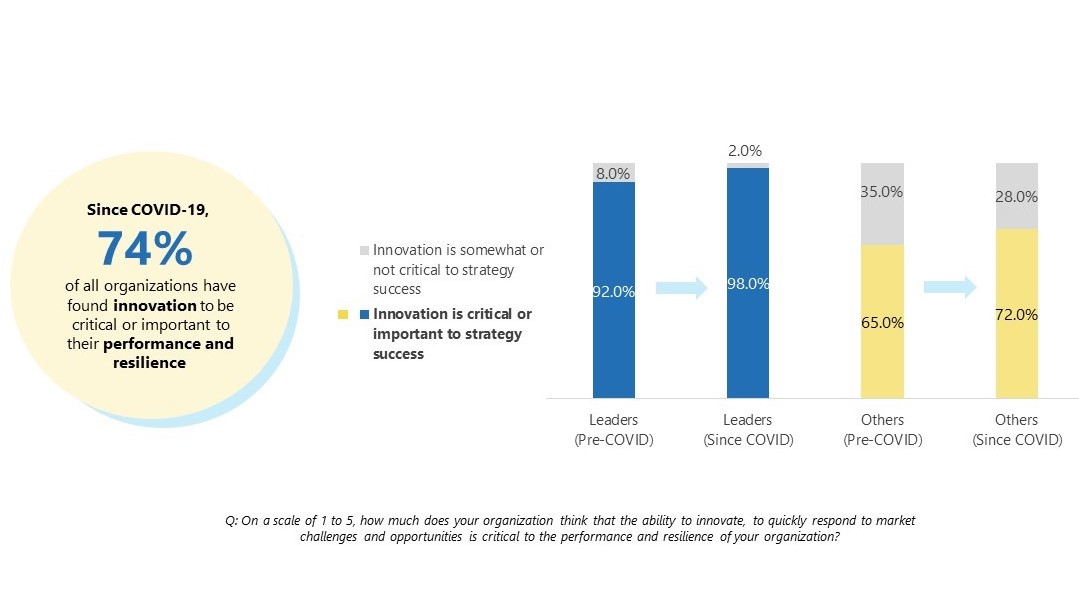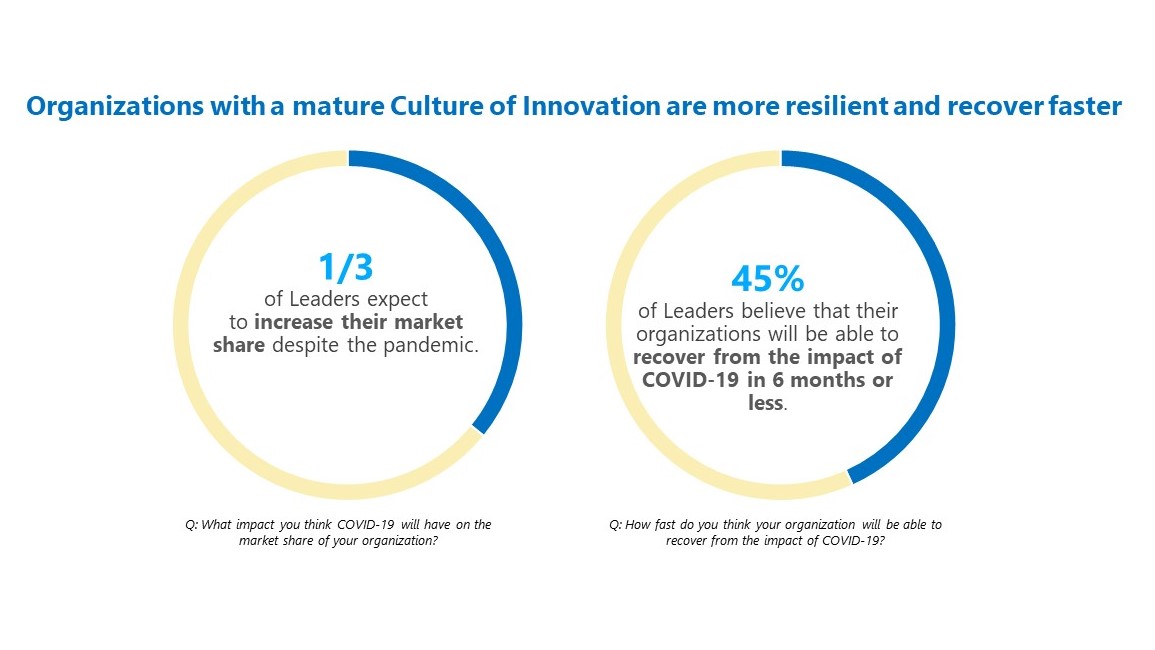 By Ahmed Mazhari, President, Microsoft Asia.
By Ahmed Mazhari, President, Microsoft Asia.
Cooking is one of my favorite pastimes, but I always seemed to be too busy to use my kitchen much. That changed when COVID-19 closed restaurants and forced us all to stay at home. It was a perfect opportunity to experiment with trying new dishes and flavors. And, apart from a few unpalatable missteps, embracing something new has made me more relaxed, creative, and healthy.
Similarly, the pandemic has driven many businesses to reinvent themselves and try new ways of doing things to cope with the crisis. For example, organizations everywhere have embraced digital tools to empower their people to continue collaborating and connecting. As Chief Executive officer at Microsoft Satya Nadella noted in April, we saw two years of digital transformation compressed into just two months.
A new study, Culture of Innovation: Foundation for business resilience and economic recovery in Asia Pacific, commissioned with IDC Asia Pacific, surveyed business decision-makers and workers across the region. It found that fostering an environment where continuous innovation can thrive is the key to long-term resilience and success.
A Culture of Innovation refers to the ongoing ability of organizations to respond quickly to challenges. It is the nutritious brew that arises from combining four key ingredients: People, Data, Processes, and Technology. As COVID-19 spread around the world, more and more leaders I spoke to across Asia were saying that they no longer viewed innovation as a luxury but as a necessity for survival. The research bears this out.  Seventy-four percent of all organizations have found innovation to be critical or important to their performance and resilience. Even more leading organizations with a mature Culture of Innovation share the same belief (98%).
Seventy-four percent of all organizations have found innovation to be critical or important to their performance and resilience. Even more leading organizations with a mature Culture of Innovation share the same belief (98%).
Moreover, the pandemic has accelerated this evolution toward innovation, with companies maturing 11% in their journeys over the last six months.
But why does innovation matter? Shouldn’t we minimize risk and play it safe during a crisis? As businesses press on toward immediate priorities of business continuity, doesn’t it make more sense to conserve resources and hunker down? It turns out that innovative organizations expect to recover from the pandemic faster.

One-third of Culture of Innovation leaders expect to increase market share despite the pandemic, while 45% said they expect their business to fully recover in less than six months.
What is the recipe for success for innovative organizations?
Earlier, I mentioned the four ingredients of a Culture of Innovation: people, data, processes, and technology. While all are crucial to the recipe, let’s take a closer look at technology and people, which were the two areas revealed to be the weakest and hence had to be prioritized to ensure business resilience and performance in the future. While companies view digital transformation as essential to business recovery, most of them are focusing more on adopting new technology and less on nurturing the right culture and talent, which is an equally important priority.
As work, school, healthcare, and even social activities shifted to a remote model, organizations raced to bring people together despite lockdowns by adopting digital tools such as cloud services, mobile technology, and video-conferencing apps. Those who had the technology in place and people empowered to harness its potential in response to the crisis clearly had the advantage.
Take Zuellig Pharma, Asia’s largest healthcare services group, as an example. As the pandemic spread, Zuellig, which had already adopted Microsoft Azure cloud solutions, quickly streamlined its day-to-day operations and rolled out innovative ordering and payment platforms months ahead of schedule, so customers across the region could maintain vital stocks during the outbreak. Employees were also able to respond by rolling out new innovative services to customers and communities. It is a clear example of how organizations can reimagine themselves for the future by encouraging people to embrace change while integrating digital and non-digital environments to support business goals.
Similarly, in the Philippines, when Manila Electric Co (Meralco) began its digital transformation journey some years ago, it wisely saw the need to transform its people as well. The 117-year-old company carefully cultivated a more open environment, encouraging employees to rebuild for the digital age.
In response to COVID-19, Meralco swiftly rolled out a custom-built rapid-testing tool and a communication app to allow employees to track and update their daily health status, ensuring they could literally keep the lights on in the country’s largest city. That’s a great example of how business leaders can take this opportunity to foster a growth mindset that, when combined with the right digital tools, can lead to new ideas and even business models in the face of great challenges.
Since COVID, 43% more organizations have recognized the importance of developing their workforces to embrace technology for effective innovation. However, digitalization, turbo-charged by the pandemic, has only widened a skills gap even as more people are thrown out of work due to the economic downturn. Training and upskilling the workforce with digital, creative, and collaborative skills is necessary and urgent. Innovation leaders see this clearly. They list upskilling and reskilling as among the top three strategies for business resilience.
Other things leaders can do is incentivize employees for innovative and long-term contributions, and not focus simply on short-term tasks and performance. Innovation must become a corporate value that is embedded everywhere, at all levels. It is also imperative to attract and retain the right talent from diverse backgrounds, and there is no better time than now. Getting there requires patience. It is not like a new technology that can be rolled out quickly and turned on with the flick of a switch. It requires thoughtfulness and empathy to ensure that everyone is included in the journey and feels they have something to contribute.
The need for continual refinement and growth
Many companies have worked long and hard to achieve a mature Culture of Innovation – a process of exponential and continuous change. Others are well on their way. It’s a process that never stops. A constant feedback loop where the organization hears from its people and allows grass-root ideas to flourish is also critical.
All great chefs know that the best dishes come about through generations of experimentation, innovation, and feedback, with customer-centricity. In the same way, we must not be complacent but seek constant improvement in these four areas – people, data, processes, and technology.
It is telling that 45% of innovation leaders expect their current business models to be uncompetitive within five years. This explains their relentless focus on reinvention and embracing new ways of working. Like taking up a new hobby such as cooking, building a Culture of Innovation requires hard work, but it can pay dividends for years to come.
BTW – my favorite dish which I cooked most often during lockdown was spaghetti aglio e olio 😊







